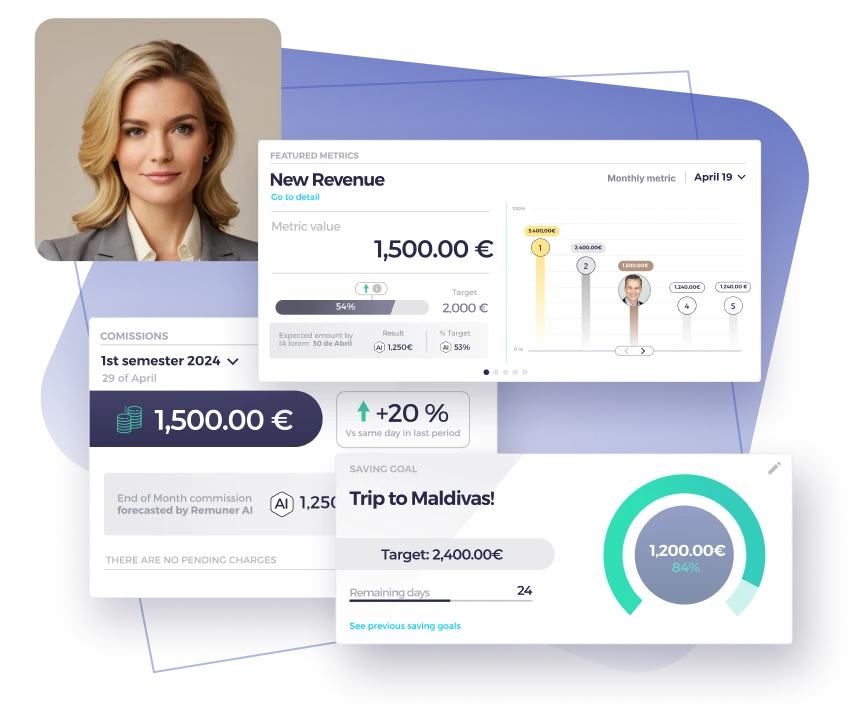Table of contents
What is gross revenue retention?
Gross revenue retention (GRR) measures the percentage of recurring revenue retained from your existing customers over a given period, excluding any revenue from upselling and cross selling strategies.
It tells you how much of your current business you’re keeping, regardless of growth efforts. GRR focuses on stability, not expansion. That’s why it’s essential for understanding customer retention and long-term revenue predictability.
GRR Formula
Here’s how to calculate your gross revenue retention rate:
GRR = [(MRR at start of period – Churned MRR – Downgrade MRR) ÷ MRR at start of period] × 100
- MRR at start of period: Monthly recurring revenue from existing customers at the beginning
- Churned MRR: Revenue lost due to cancellations
- Downgrade MRR: Revenue lost from customers downgrading plans
GRR Example
Let’s say you start with $100,000 MRR from existing customers. Over the month:
- You lose $7,000 from churned accounts
- You lose another $3,000 from customers who downgraded their plans
Your GRR would be:
GRR = [(100,000 – 7,000 – 3,000) ÷ 100,000] × 100 = 90%
This means you retained 90% of your recurring revenue from current customers—without counting upgrades.
Why gross revenue retention matters
GRR is one of the most important metrics for SaaS businesses and subscription-based models. Here’s why:
- It measures customer loyalty in financial terms
- It reflects the health of your business model
- It identifies product-market fit and user satisfaction
- It highlights issues in customer success and onboarding
Unlike net revenue retention, GRR reveals whether your product alone keeps customers without relying on expansions. A high GRR means your customer base is stable. A low GRR signals risks—even if you’re growing through new sales or upsells.
Gross revenue retention vs net revenue retention
Understanding the difference between gross revenue retention and net revenue retention (NRR) is essential:
| Metric | Includes Upsells? | Focus | Good Benchmark |
|---|---|---|---|
| GRR | ❌ No | Retention health | >90% |
| NRR | ✅ Yes | Expansion growth | >110% |
NRR and gross revenue retention are complementary. You want both to be strong—but don’t let high NRR mask a weak GRR. If you’re losing core revenue while growing through expansions, you’re building on a shaky foundation.
What is a good gross revenue retention rate?
GRR benchmarks vary by industry and business size. That said, here are general guidelines:
- Above 90% → Strong
- 85% to 89% → Needs improvement
- Below 85% → High churn risk
Top-performing SaaS companies typically achieve 90–95% GRR, with exceptional ones reaching up to 98%. Leading SaaS businesses consistently maintain gross revenue retention rates above 90%, with best-in-class performers exceeding 95%. According to the latest SaaS Benchmarks Report by ChartMogul, top-quartile companies demonstrate high GRR as a core indicator of long-term growth and customer loyalty.
Key drivers of gross revenue retention
1. Customer success and onboarding
First impressions matter. A weak onboarding experience often leads to early churn.
Make sure your customer success team is proactive, not reactive. Focus on user adoption, milestone tracking, and personalized support from day one.
2. Product value and stickiness
The more essential your product becomes, the less likely customers are to leave. Invest in improving usability, performance, and value delivery.
Ask yourself: does your product integrate into your customer’s daily workflow?
3. Contract management and renewals
Poor visibility into renewals often leads to preventable churn. Use tools that alert teams ahead of renewal windows. Automate reminders and track usage trends for early warning signs.
4. Compensation and incentive plans
If your sales team focuses solely on closing new deals, they’ll neglect existing accounts. Align your compensation plan to include renewal quotas and retention KPIs.
How Remuner helps:
Remuner allows you to design incentive structures that reward both new business and retention. Set renewal-based commissions and track quota attainment in real time. Explore sales compensation plans.
How to improve gross revenue retention
Boosting GRR is a team sport involving customer success, sales, and operations. Here are proven tactics:
A. Track churn reasons systematically
You can’t fix what you don’t understand. Use structured exit surveys and categorize churn reasons into product gaps, pricing, support quality, and ROI concerns.
B. Introduce retention-based incentives
Motivate account managers and customer success teams with goals tied to retention, not just customer count.
Example: Assign OTE targets that reward maintaining a 95% GRR in their portfolio.
How Remuner helps:
With Remuner, you can link GRR to variable pay, customize compensation by role, and automate payouts based on live CRM data. Automate your commission tracking.
C. Identify downgrade risks early
Not all churn happens suddenly. Monitor usage patterns, reduced logins, or frequent support tickets. These often precede a downgrade MRR event or full cancellation.
Create a health score for accounts based on behavior and trigger retention campaigns automatically.
D. Build upsell paths—but don’t rely on them
While upselling and cross selling strategies increase NRR, they shouldn’t compensate for poor GRR. Focus first on keeping the revenue you already have.
Real-world example: improving GRR in a SaaS company
Scenario: A mid-sized SaaS company with $250,000 MRR noticed GRR slipping to 85%.
Challenges:
- Reps focused on new deals only
- CS team overwhelmed with tickets
- High downgrade MRR from enterprise accounts
Actions:
- Introduced renewal quotas in sales comp plans
- Incentivized retention in CS OTEs
- Added product usage tracking and alerts
- Created a churn prevention playbook
Results after 3 months:
- GRR improved from 85% to 92%
- Churned MRR fell by 30%
- Customer satisfaction scores rose by 20%
How Remuner helped:
They used Remuner to roll out the new sales compensation plan, link performance dashboards to GRR metrics, and adjust commission structures within days—without needing IT involvement.
Common mistakes in managing gross revenue retention
Avoid these pitfalls when working on your GRR:
- Focusing only on NRR and ignoring core retention
- Incentivizing expansion without retention accountability
- Not tracking downgrade MRR separately
- Treating customer success as a support desk, not a revenue team
- Using static spreadsheets for compensation and commissions
Gross revenue retention and your business model
Your GRR is not just a metric—it’s a mirror of your business model.
- If your GRR is low, your product likely lacks stickiness
- If your GRR fluctuates wildly, your onboarding or account management may be inconsistent
- If your GRR is strong, you’ve built a scalable revenue foundation
Want to turn your gross revenue retention into a growth engine? Align your sales compensation plan, quota setting, and commission tracking software with customer success goals.
Remuner helps teams do exactly that. Book a demo to see how.
FAQs: Gross Revenue Retention
What is the difference between gross and net revenue retention?
Gross revenue retention (GRR) measures how much recurring revenue you keep from existing customers, excluding upgrades. Net revenue retention (NRR) includes upsells and cross-sells. Both are important, but GRR gives a clearer picture of customer loyalty and product fit.
What is a good gross revenue retention rate for SaaS?
Most SaaS companies aim for 90–95% GRR. Anything above 90% is considered strong. A GRR below 85% signals that churn or downgrades could be limiting your growth.
How can I increase my GRR without changing my product?
Focus on onboarding, customer success, and retention incentives. Use health scoring to spot at-risk customers early, and offer support or proactive check-ins before renewal.
Can sales compensation plans affect gross revenue retention?
Yes. If reps are only paid for closing new deals, they’ll neglect existing customers. Aligning sales incentives with retention goals boosts GRR and strengthens long-term revenue.





